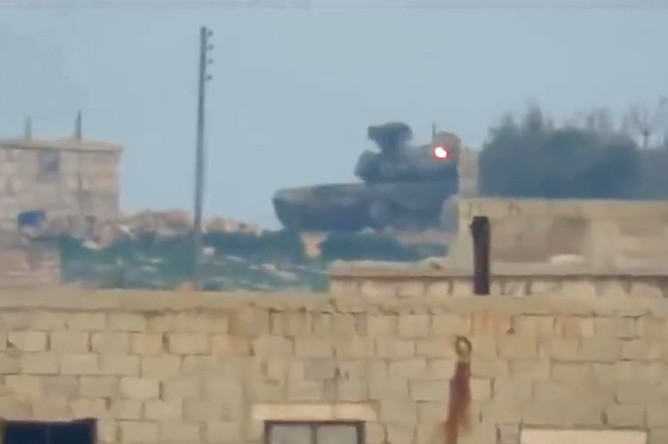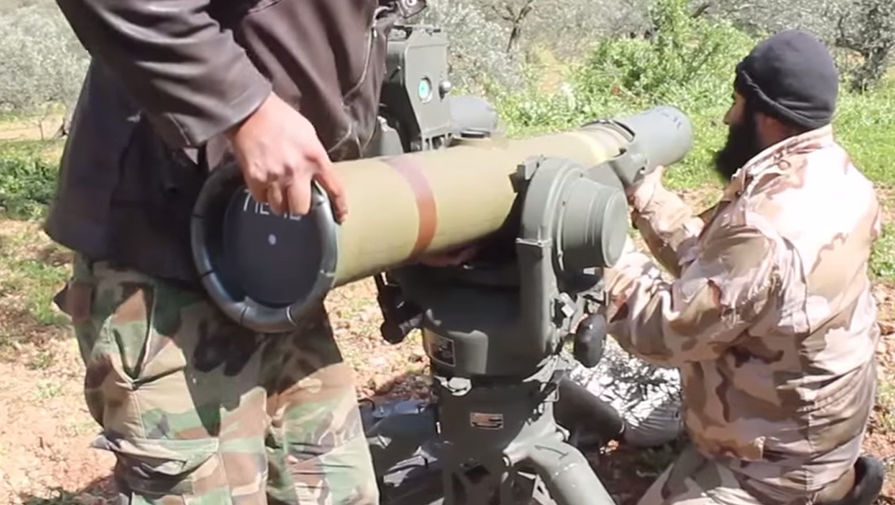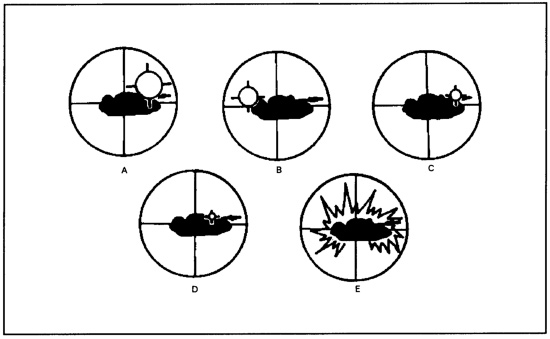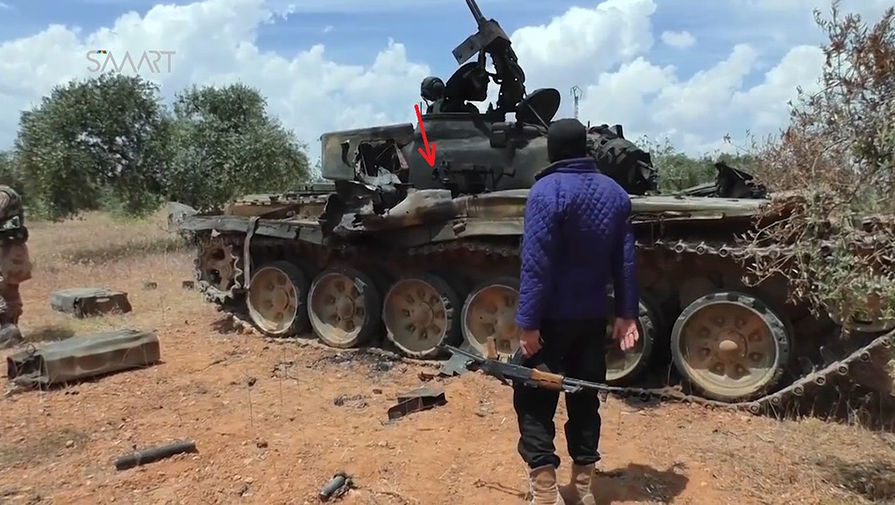
Original by Viktor Murakhovskiy published by gazeta.ru; translation by J.Hawk
Syria has seen many types of anti-tank guided missiles (ATGMs) and light anti-tank weapons being used on its territory. There are Soviet-era Fagot/Faktoriya and Konkurs missiles, the more modern Kornet which is used by the SAA, US-made TOW-2A which was and probably is being delivered to the so-called “moderate opposition” by the US, and also by Turkey and Qatar to Islamist groups.
There are also Chinese and Iranian ATGMs, which are used by militants, government forces, and teh Kurds. The RPG-7 is the most widely used light AT weapon, including its Chinese and Iranian copies, and the single-shot RPG-22.
The US TOW-2A have undoubtedly become one of the most dangerous weapons used against Syrian tanks.
The TOWs used in Syria are from various manufacturing batches. Some from the ’90s, some with very recent 2012-2013 markings. Nearly all of them are the modern TOW-2A variants of which several tens of thousands were manufactured in the US and exported to many countries.
All are wire-guided, except the radio-command Aero-RF version which was not used in Syria. Militants tend to film their TOW use in order to receive bounties for destroying Syrian equipment.

The missile is guided using an ordinary optronic sight device. The crosshairs are placed on targets, the missile is launched, and the operator continues to hold the crosshairs on target. The sight device contains a so-called coordinator which tracks the missile’s tracer, a xenon lamp and an infrared emitter, located in the missile’s tail.
Depending on the level of deviation from the sight line, the coordinator generates corrections which are transmitted through the wire. The wire reel is located in the missile itself. Many missiles use a similar principle, including Soviet-era ones. There is no need to illuminate the target or measure distance. TOW-2A maximum range is 3750m, which it covers at a subsonic speed of 250-260 meters/s.
It carries a tandem shaped-charge warhead. The nose spike contains a small charge which is supposed to detonate reactive armor protective elements. The main charge is 152mm in diameter and weighs about 6kg, which allows a penetration of 850-900mm of homogeneous steel armor behind reactive protection.
A TOW-2A was used to destroy the damaged Mi-8 during the Su-24 pilot rescue operation. The missile can be used against many types of targets, including low-flying helicopters.
Contemporary ATGMs, including Russian ones, have automatic target trackers which allow the operator to not have to worry about tracking the target manually. Russian T-72B3 tanks, which can launch guided missiles, have such trackers.
The target tank’s destruction is practically guaranteed if it is hit by a missile like that in the side or rear. No tank has sufficient all-round protection to withstand such hits.
What do we see on the video? We see a T-90 model 1992 with a cast turret. This much is obvious from the presence of Shtora and the shape of the gunner’s hatch. Model 2004 tanks have a welded turret with a higher level of protection.
The tank is protected by Kontakt-5 reactive armor, and its forward aspects are protected by layered armor. We can see that the missile hit the left front turret face, triggering Kontakt-5, but apparently failed to penetrate the main armor.
The tank’s crew neglected its battlefield duties: the hatches were open, Shtora was not switched on. It suggests the crew was not very well trained. We have information suggesting Syrian crews are not trained in Russia but on the spot. There are Russian tankers in Syria but they work as instructors at the Ithriyah base.
The explosion of a 6kg warhead naturally caused considerable blast over-presssure which penetrated into the open hatch, which prompted the stunned gunner to jump out of the tank. If the hatch were closed, he’d not have suffered from the over-pressure. The tank’s frontal protection is several times greater than side protection. Soviet and Russian tanks are designed to withstand hits by most munitions from the frontal aspect, in other words, within the forward 60 degree arc.
The tank’s crew was poorly trained, and the way the tank was being used leaves a lot to be desired. Tanks ought to be part of combined arms teams and operate with close infantry support. As one can see, the crew did not detect the missile’s launch. If at least three tanks, or a platoon, were operating together with mutually interlocking fields of vision and fire, and if infantry were scouting ahead of the tanks, the missile crew would have been destroyed immediately after launch. The tank also makes no attempt to maneuver, and a single, isolated tank that’s sitting still is an ideal target.

The video was filmed in Sheikh-Akil north-west of Aleppo where the Zaviya Mountain Falcons is operating as part of the Free Syrian Army 5th Corps. It was a reconnaissance in force by Khazara and Afghan Shia fighters. They tried to capture Sheikh-Akil but were repulsed. Later videos from the same town do not show a T-90 wreck, though there are videos showing the withdrawal of troops and equipment. It means that the tank either left the battlefield on its own or was evacuated.
I think that the tank remained mobile and the crew survived, although it’s possible some of its sighting devices were damaged.
Shtora-1 is standard equipment on a T-90. The two turret-mounted projectors emit modulated radiation in the optical and infra-red parts of the spectrum. The system suppresses optronic ATGM coordinators out to a distance of 2-2.5km. ATGM tracking systems receive false signals from the Shtora emitters so the missiles receive improper course corrections leading to them flying off to the side or crashing.


One should add that SAA tanks and other armored vehicles are sometimes equipped with “dazzlers”, or domestically developed systems with function in a way similar to the Shtora, except that they provide all-round field of protection. Since Syrians now have TOW-2A in their possession, they can develop jammers capable of operating against these missiles. As long as one knows the frequencies and spectrum ranges which the ATGM tracker senses.
Using T-90s or Su-35s will not bring about a breakthrough in the fighting, however, if tanks are used with skill, in close cooperation with other arms and in a concentrated, mass fashion, the effectiveness of their operations will increase.





